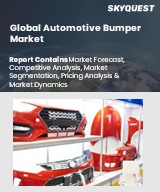
Report ID: SQMIG25A2243

Report ID:
SQMIG25A2243 |
Region:
Global |
Published Date: April, 2024
Pages:
225
|
Tables:
86 |
Figures:
76
Asia-Pacific dominates the global market with the presence of major automotive manufacturers in China, Japan, India and South Korea. China has become the largest automotive market in the world and is estimated to play a major role in influencing the global automotive bumper market forecast over the next few years. Findings from the latest car bumper market study show that government incentives to promote EVs and improve safety standards in China have impacted the market. Light and compact cars are the trend in India. In this market, budget-friendly bumpers are generally preferred. However, the demand for safety features is also growing. Also, automakers in Japan emphasize on technical and safety features for their vehicles, which can influence the design of bumpers. Japan also plays an important role in the global supply chain of bumper products and accessories.
North America has the most important auto industry in the United States. Global automotive bumper market estimates in the US. influence consumer demand for trucks, SUVs and crossovers. Bumper systems generally prioritize aesthetics and safety features. Stricter safety regulations from NHTSA and other agencies also affects the market. North America, particularly the United States and Canada, has strict safety regulations regarding vehicle design and service standards. This code mandates the use of advanced safety features, including shock-absorbing bumpers, to protect occupants and reduce the severity of a collision. Compliance with this Code for the adoption of highly technologically advanced bumpers in vehicles manufactured and sold in the region.
Our industry expert will work with you to provide you with customized data in a short amount of time.
REQUEST FREE CUSTOMIZATIONWant to customize this report? This report can be personalized according to your needs. Our analysts and industry experts will work directly with you to understand your requirements and provide you with customized data in a short amount of time. We offer $1000 worth of FREE customization at the time of purchase.

Report ID: SQMIG25A2243